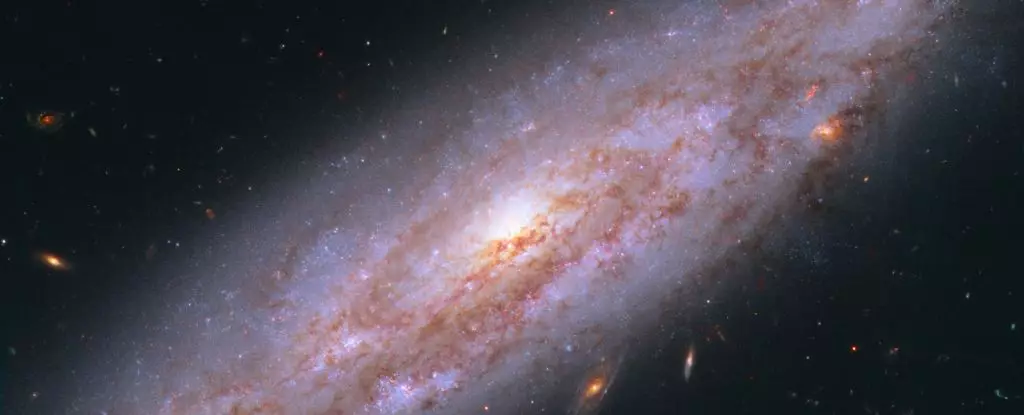The expansion speed of the Universe has long been a topic of fascination and debate among scientists. Recent measurements taken using the James Webb Space Telescope have shed new light on this issue, suggesting that the local Universe is moving away from us at a rate of approximately 70 kilometers per second per megaparsec. This revelation has the potential to resolve a major long-standing discrepancy in cosmology known as the Hubble tension.
In the quest to calculate the Hubble constant, scientists rely on different kinds of observables. Two key signals come from the early Universe in the form of the cosmic microwave background and baryon acoustic oscillations, which serve as standard rulers due to their known sizes. On the other hand, signals from the nearby Universe, such as Cepheid variable stars and Type Ia supernovae, act as standard candles with known intrinsic brightness. These observables provide valuable distance measurements, with current estimates suggesting an expanding rate of around 67.4 kilometers per second per megaparsec and 74 kilometers per second per megaparsec, respectively.
Astronomer Wendy Freedman and her team have been dedicated to measuring the Hubble constant using alternative methods, focusing on stars at the tip of the red giant branch (TRGB stars). These stars offer a uniform size and brightness, making them a reliable tool for gauging the distance to nearby galaxies. By leveraging observations from instruments like Hubble and Gaia, Freedman and her colleagues have obtained several TRGB measurements, yielding a Hubble constant range of approximately 69 to 70 kilometers per second per megaparsec.
The introduction of the James Webb Space Telescope has revolutionized the study of the expansion speed of the Universe. Freedman’s team utilized this powerful telescope to measure TRGB stars, Cepheid variable stars, and a unique type of carbon-rich giant star to derive an independent measurement of the Hubble constant. Their findings indicated values of 69.85 kilometers per second per megaparsec for TRGB stars, 67.96 for carbon stars, and 72.05 for Cepheid variables, with overlapping error bars pointing to potential alignment among the different observables.
While the recent measurements offer promising insights into the Hubble tension, the scientific community acknowledges the need for continued exploration and validation. Despite falling within the error bars of standard rulers and standard candles, discrepancies in past measurements underscore the importance of further scrutiny and refinement. As researchers continue to probe the expansion speed of the Universe, the possibility of uncovering new physics or refining existing theories remains a tantalizing prospect. Through meticulous observation and analysis, we inch closer to unraveling the mysteries of the cosmos and understanding the fundamental forces at play.


Leave a Reply